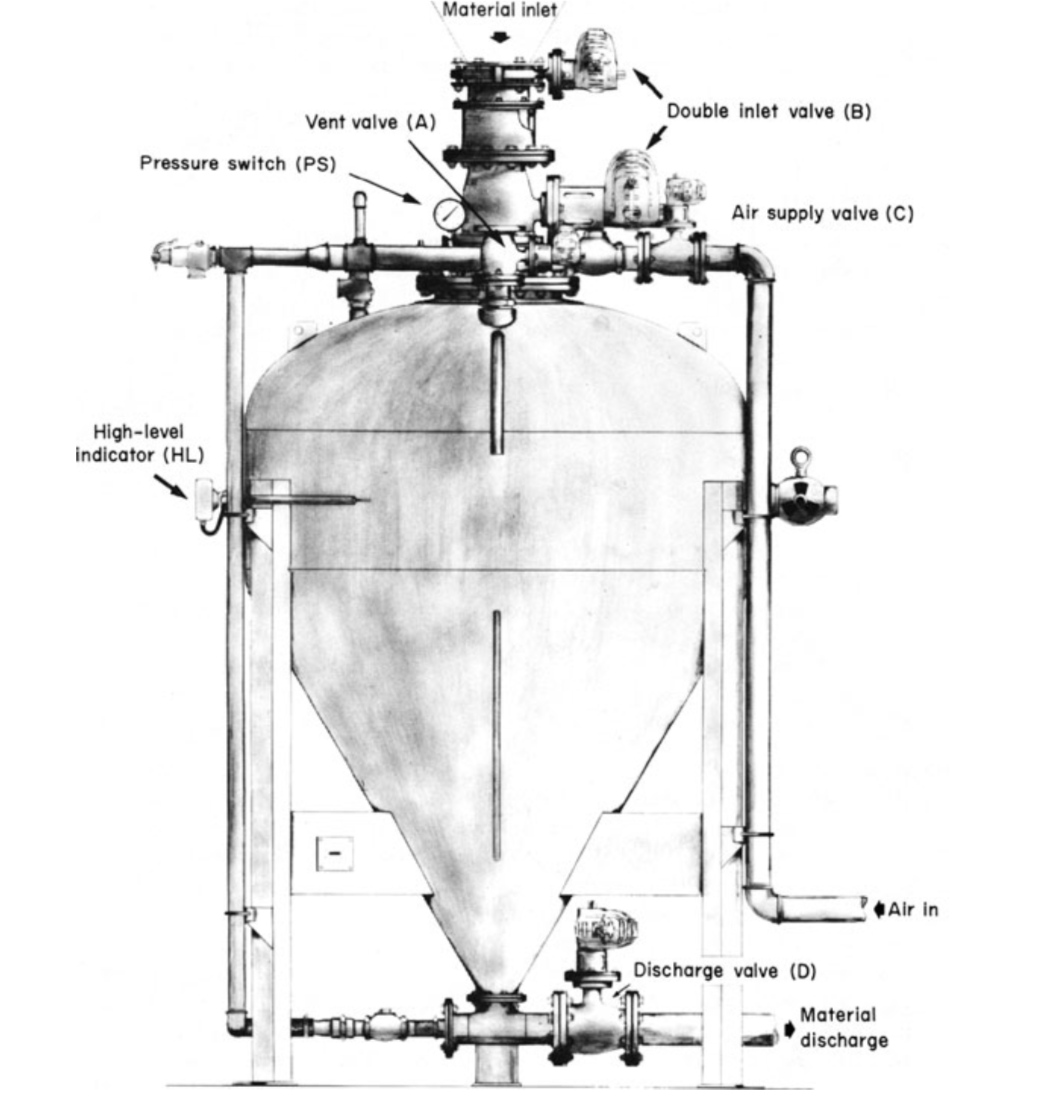Q&A: How does a sending vessel work in pneumatic transport?
How does a sending vessel work in pneumatic transport?
A fully automated sender and blow vessel works as follows (see image below)
- The vent valve (A) is opened to reduce the pressure of the vessel.
- After a short delay, the material supply valve (B) is opened and the filling process is initiated.
- The material will flow into the drum until the high level (HL) indicator is activated.
- The high-level indicator (HL) activates a signal to close the valves (A) and (B).
- After a delay, the air supply valve (c) is opened to add air to the vessel.
- Air is fed into the vessel until a preset pressure in the vessel is reached.
- A pressure switch (PS) is activated which in turn sends a signal to open the drain valve (D).
- Material is fed until a low pressure signal is detected on the pressure switch, indicating that all material has been transported.
- Normally, the air supply is maintained for a short time to ensure that any material remaining in the pipe is transported to the receiving station.
- The cycle is then restarted.



